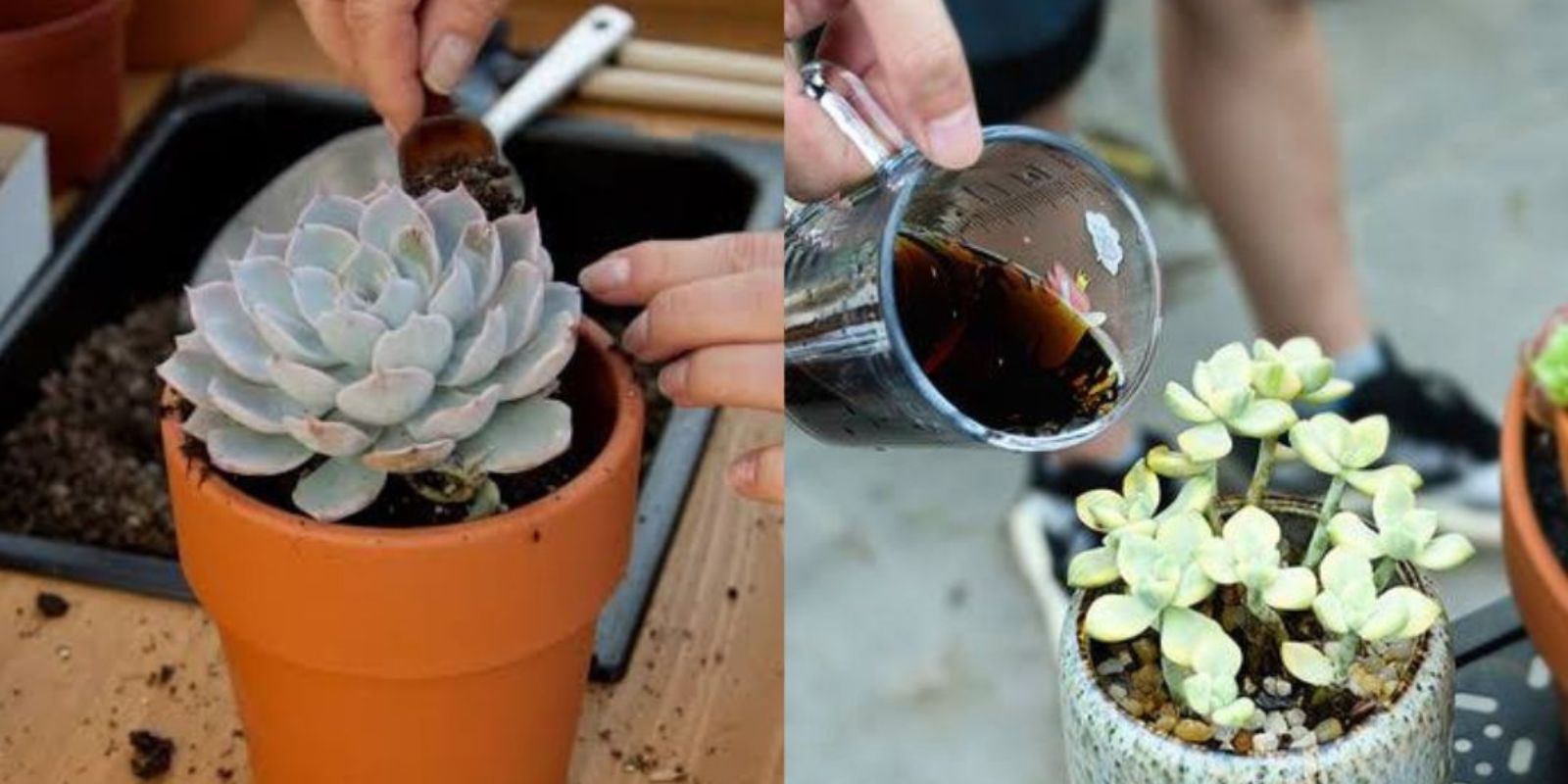Succulents and cacti have earned their place as some of the most popular plants among gardeners and plant enthusiasts. These hardy plants thrive in challenging conditions, but just like any other plant, they need proper nutrition to stay healthy and grow to their full potential. Chemical fertilizers can harm their delicate roots and the surrounding environment, making natural fertilizers an excellent alternative. In this article, we’ll show you how to make a perfect natural fertilizer for succulents and cacti, ensuring they stay vibrant, healthy, and thriving.
Why Succulents and Cacti Need Fertilizers
Succulents and cacti are known for their ability to store water and survive in arid conditions. However, over time, the soil they are planted in becomes depleted of nutrients. Fertilizing your succulents and cacti ensures:
- Healthy growth: Nutrients support cell development and help plants grow thicker, greener leaves and stronger stems.
- Vibrant blooms: Certain cacti and succulents produce flowers, and proper nutrition is essential for promoting blooming.
- Disease resistance: Healthy plants are better equipped to resist pests and diseases.
Ingredients for a Natural Fertilizer
The key to creating a natural fertilizer for succulents and cacti is using organic materials that are nutrient-rich and safe for their unique needs. Here’s what you’ll need:
- Banana Peels: Rich in potassium, which helps strengthen plant stems and promotes healthy growth.
- Eggshells: A natural source of calcium, which prevents root rot and strengthens cell walls.
- Used Coffee Grounds: Provide nitrogen, essential for green, lush foliage.
- Water: Acts as a carrier for the nutrients, ensuring they are absorbed into the soil.
- Optional: Epsom Salt: Adds magnesium and sulfur, which enhance photosynthesis and chlorophyll production.
How to Make Natural Fertilizer for Succulents and Cacti
Step 1: Prepare the Ingredients
- Collect banana peels, eggshells, and used coffee grounds.
- Allow the banana peels and eggshells to dry thoroughly in the sun or in a dry area indoors.
Step 2: Crush the Ingredients
- Once dry, crush the eggshells into small pieces using a mortar and pestle or a food processor.
- Chop the banana peels into small sections to make blending easier.
Step 3: Blend Everything Together
- In a blender, combine the crushed eggshells, banana peel pieces, and used coffee grounds.
- Add water to the mixture—about two cups for every handful of ingredients. Blend until smooth.
Step 4: Strain the Mixture
- To ensure a clean application, strain the mixture through a fine mesh or cheesecloth to remove solid particles. This step is optional but helpful for potted plants.
Step 5: Dilute the Fertilizer
- The mixture will be highly concentrated, so dilute it further by adding one part fertilizer to three parts water. This will prevent over-fertilizing, which can harm your plants.
How to Use the Fertilizer on Succulents and Cacti
- Application Frequency: Use this natural fertilizer once a month during the growing season (spring and summer). Avoid fertilizing during the dormant season (fall and winter).
- Method of Application:
- Pour the diluted fertilizer directly onto the soil around the base of the plant.
- Avoid getting the fertilizer on the leaves or stems, as this can lead to rot.
- Amount to Use: For small potted succulents, use about 1–2 tablespoons of fertilizer. For larger plants, adjust the quantity accordingly.
- Monitor Your Plants: Observe your succulents and cacti for signs of over-fertilizing, such as yellowing leaves or overly rapid growth. If you notice these, reduce the frequency or concentration of the fertilizer.
Benefits of Using Natural Fertilizers
- Eco-Friendly: Unlike chemical fertilizers, natural fertilizers don’t harm the environment. They enrich the soil organically without leaving toxic residues.
- Cost-Effective: Using kitchen waste like banana peels and coffee grounds reduces the need to buy expensive fertilizers.
- Gentle on Plants: Natural fertilizers release nutrients slowly, minimizing the risk of root burn.
- Improves Soil Quality: Organic materials improve soil structure and promote beneficial microbial activity, which supports plant health.
Tips for Healthy Succulents and Cacti
- Sunlight: Ensure your plants get adequate sunlight. Most succulents and cacti thrive in bright, indirect light.
- Watering: Water sparingly and only when the soil is completely dry. Overwatering can lead to root rot.
- Drainage: Use well-draining soil and pots with drainage holes to prevent waterlogging.
- Pruning: Remove dead or damaged leaves to encourage new growth and maintain the plant’s appearance.
- Pest Control: Check your plants regularly for signs of pests like mealybugs and spider mites, and treat them promptly.
Common Mistakes to Avoid
- Over-Fertilizing: Applying too much fertilizer can damage succulents and cacti. Stick to the recommended frequency and dilution ratio.
- Using Unbalanced Ingredients: Avoid ingredients high in salt or acidity, such as citrus peels, as they can harm these plants.
- Applying Fertilizer in Dormant Season: Fertilizing when plants are not actively growing can stress them.
Frequently Asked Questions
1. Can I use this fertilizer on other plants?
Yes! This natural fertilizer is suitable for most plants but should be used sparingly for low-nutrient plants like succulents and cacti.
2. Can I store the fertilizer for later use?
It’s best to use the fertilizer immediately to ensure the nutrients remain potent. However, you can refrigerate it for up to a week.
3. What if I don’t have all the ingredients?
You can still make a simplified version using just one or two of the ingredients. For example, banana peel tea or crushed eggshells work well on their own.
Conclusion
Creating a natural fertilizer for succulents and cacti is simple, sustainable, and incredibly rewarding. By repurposing kitchen waste, you not only nourish your plants but also contribute to a healthier environment. With this DIY fertilizer, your succulents and cacti will thrive, producing vibrant leaves and, for some, even beautiful flowers.
Have you tried making your own fertilizer before? Share your experiences and tips in the comments below! Let’s grow together!

